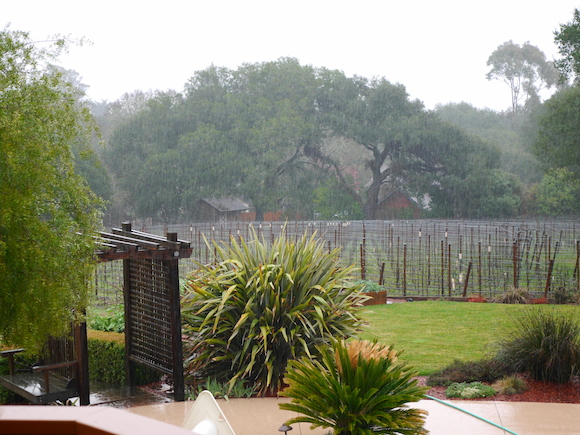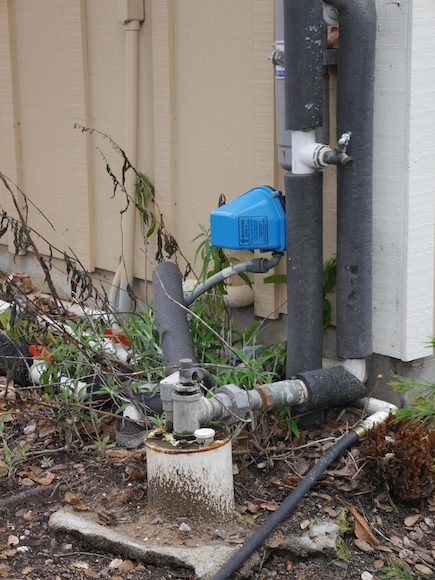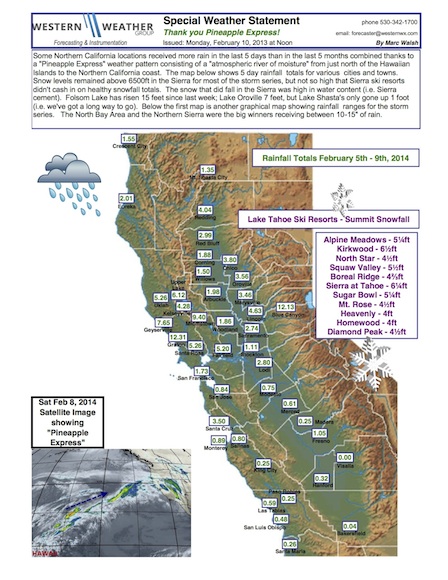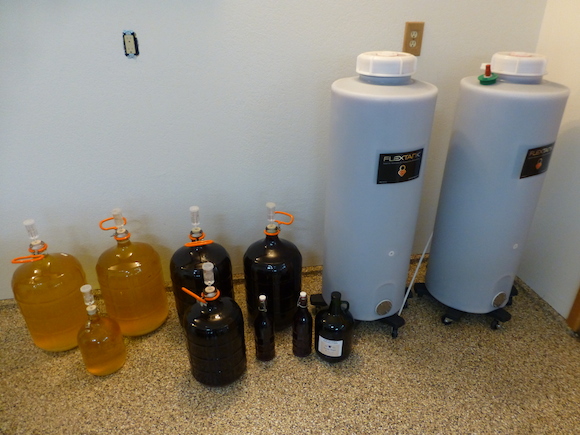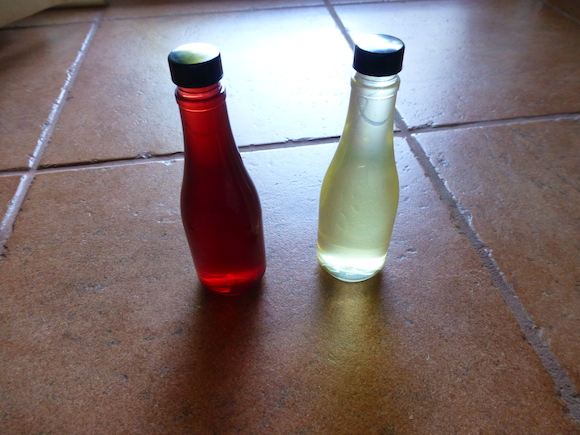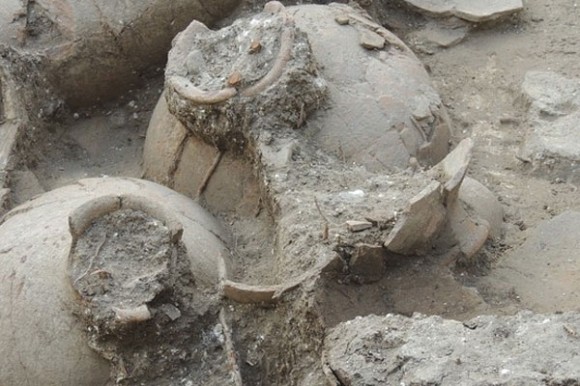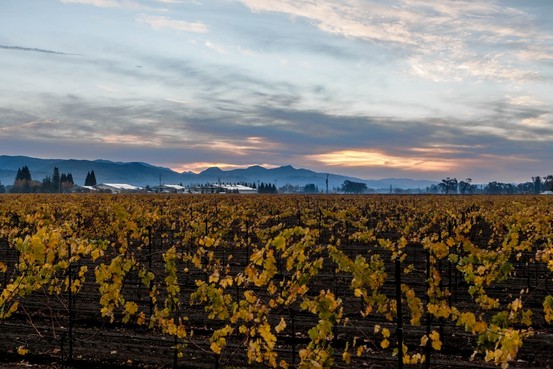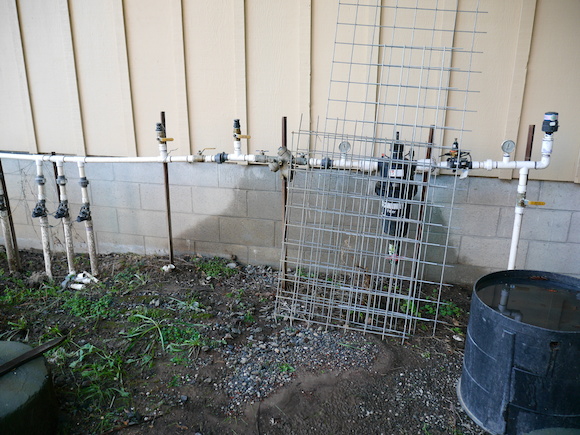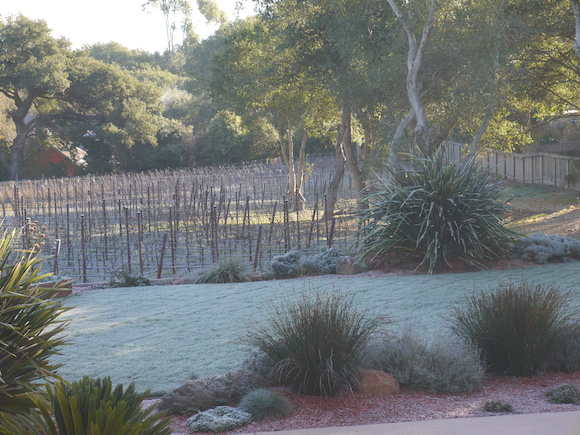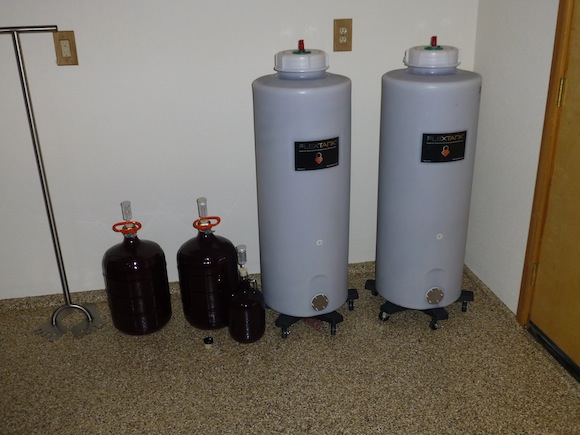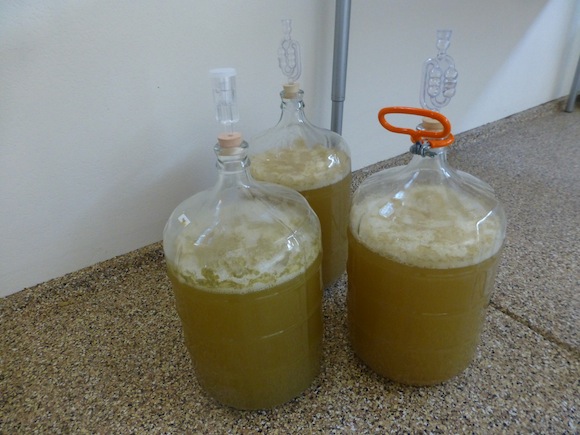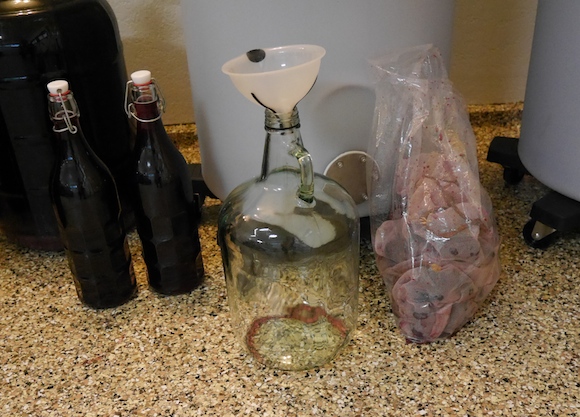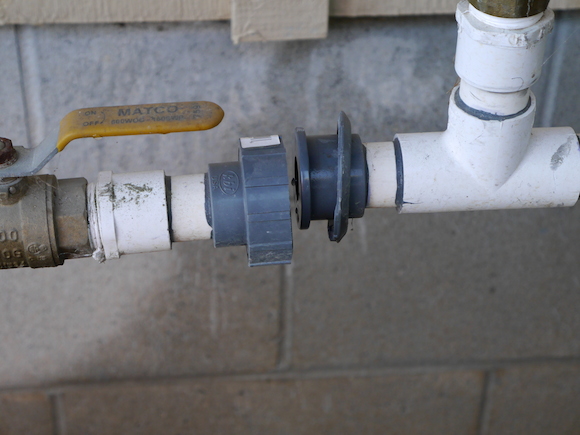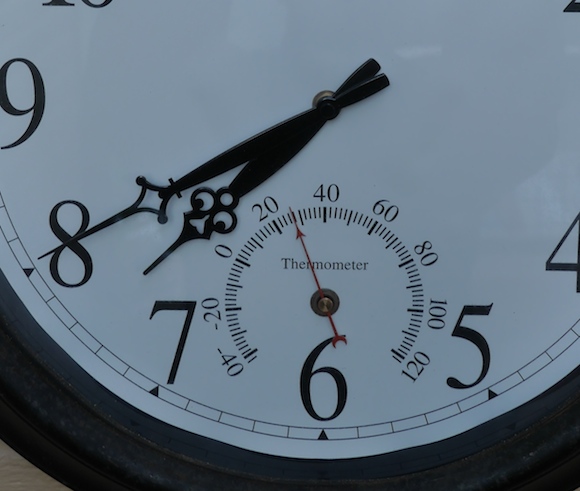If you have been watching the news you should have heard that California is in a severe drought. We had about 20% of our normal rainfall last year and the previous years were OK, but not to normal.
Last week (2/6/14-2/9/14) we had our first real winter rain storm of the season and we got 10.7″ of rain. Unlike where I grew up in Olympia, WA where it rains 1/4″ a day all winter, we get our rain in downpours and then it clears up. So this was bigger than a normal storm but not unwelcome. Since we normally get 40″ a year, and this storm put us to 15″, we still have a ways to go to refill our aquifers and get the ground fully saturated.
The other thing you may have heard is that some towns in California will run out of water. True…depending on where they get their water. Here in Sebastopol we have a good aquifer that so far has not been affected by the drought. We use this aquifer for Turtle Vines. Even though we are a new vineyard we are striving to use as little water as possible. I probably went to far last year as we did not get enough renewal spurs, but that is for the next post.
We tested our well last week. It is drilled to 170′ and right now we are at 61′ to the water table. Later in the year when we begin watering, we will test it again and also find out how fast it recharges after use. Just FYI…When we purchased our home 6 years ago they said the well was good for 20 gallons/min. We set up 4 sections in the vineyard and they only draw around 7 gal/min.
This is the map of the recent storm. We are near the Graton station.
